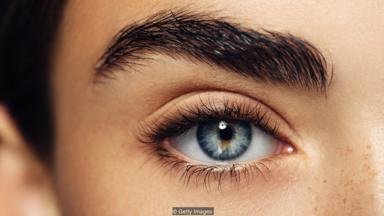You’ve doubtless had the experience when, across a noisy, crowded room, you lock gazes with another person. It’s almost like a scene out of the movies – the rest of the world fades to grey while you and that other soul are momentarily connected in the mutual knowledge that they are looking at you and you at them.
Of course, eye contact is not always so exciting – it’s a natural part of most casual conversations, after all – but it is nearly always important. We make assumptions about people’s personalities based on how much they meet our eyes or look away when we are talking to them. And when we pass strangers in the street or some other public place, we can be left feeling rejected if they don’t make eye contact.
This much we already know from our everyday experiences. But psychologists and neuroscientists have been studying eye contact for decades and their intriguing findings reveal much more about its power, including what our eyes give away and how eye contact changes what we think about the other person looking back at us.
You might also like:
Why athletes need a quiet eye
How the eyes betray your thoughts
Can carrots really improve eyesight?
For instance, a recurring finding is that gazing eyes grab and hold our attention, making us less aware of what else is going on around us (that ‘fading to grey’ that I mentioned earlier). Also, meeting someone’s gaze almost immediately engages a raft of brain processes, as we make sense of the fact that we are dealing with the mind of another person who is currently looking at us. In consequence, we become more conscious of that other person’s agency, that they have a mind and perspective of their own – and, in turn, this makes us more self-conscious.
You may have noticed these effects particularly strongly if you’ve ever held the intense gaze of a monkey or ape at a zoo: it is almost impossible not to be overcome by the profound sensation that they are a conscious being judging and scrutinising you. In fact, even looking at a portrait painting that appears to be making eye contact has been shown to trigger a swathe of brain activity related to social cognition – that is, in regions involved in thinking about ourselves and others.
See more on. www.bbc.com/news

Hi! I am a robot. I just upvoted you! I found similar content that readers might be interested in:
http://www.bbc.com/future/story/20190108-why-meeting-anothers-gaze-is-so-powerful
... and please tell your !sources
Steemit FAQ
The Complete Steemit Etiquette Guide (Revision 2.0) by @thecryptofiend
When posting content that either is owned by someone else or inspired by someone else’s works, it is proper to list the said source in your post with a link to the original.
Failing to do so is considered plagiarism, and could result in being blacklisted by curation groups or even flagged.
Examples include:
Thankyou sources I was unaware about this because I'm new here. Thanks for guiding me to do good way .I will keep this in my mind now